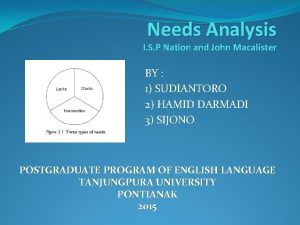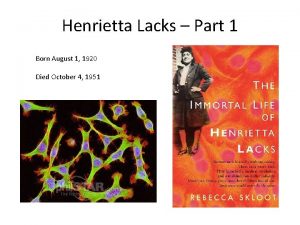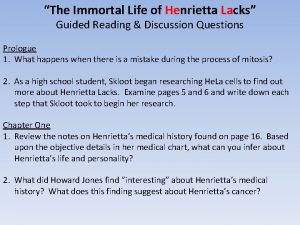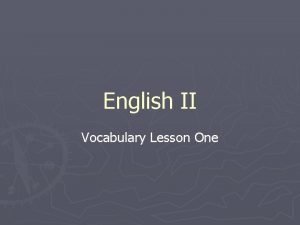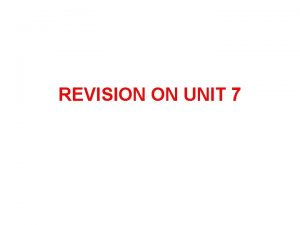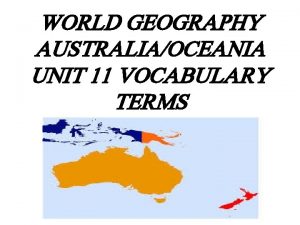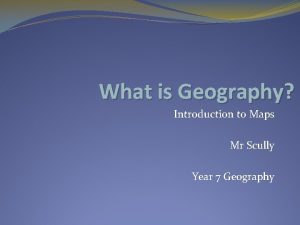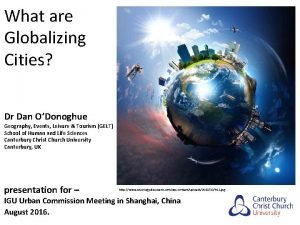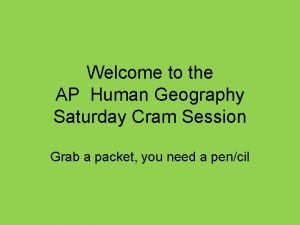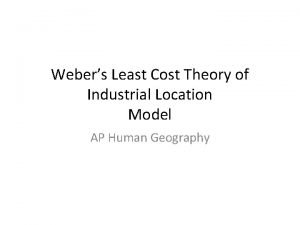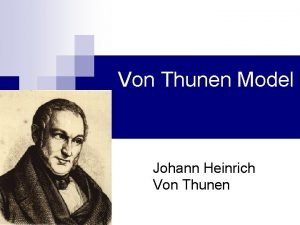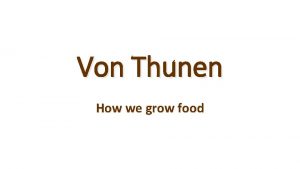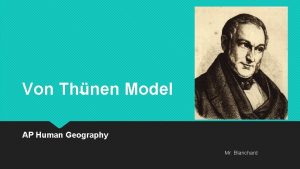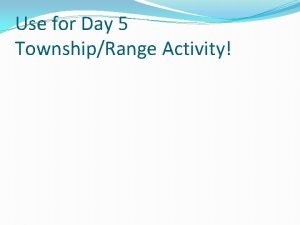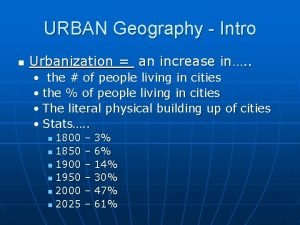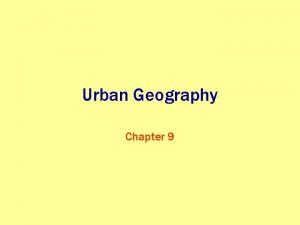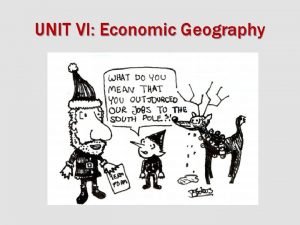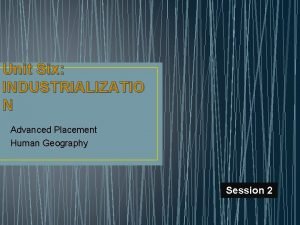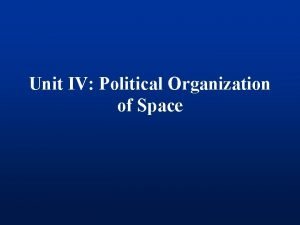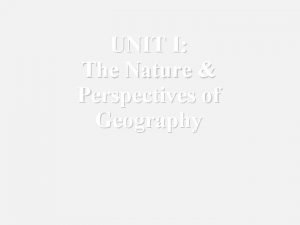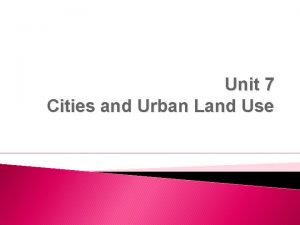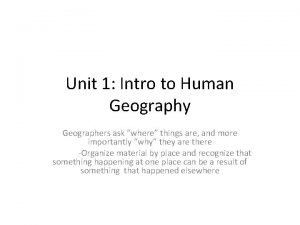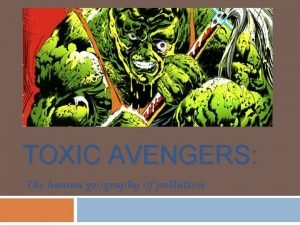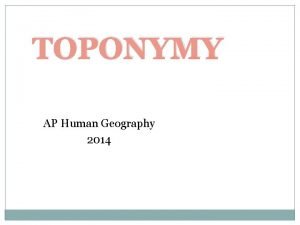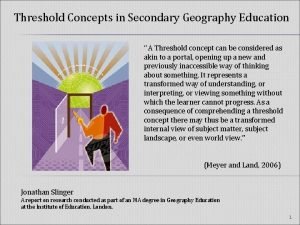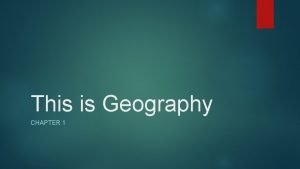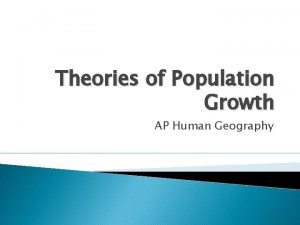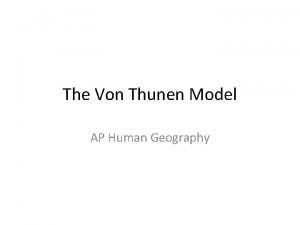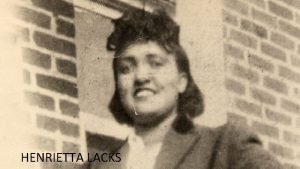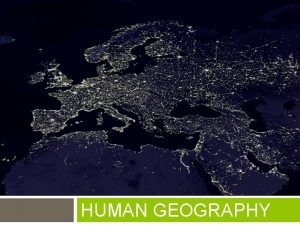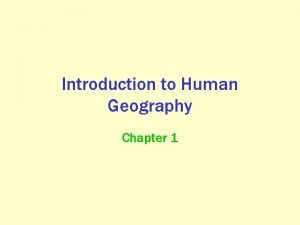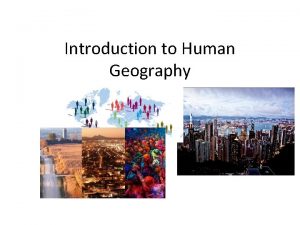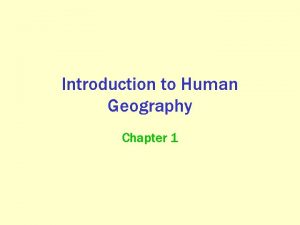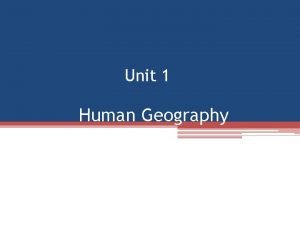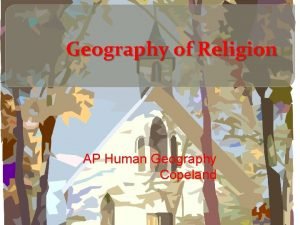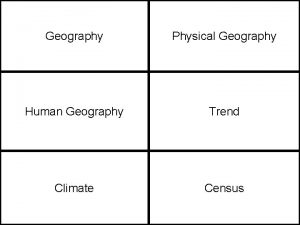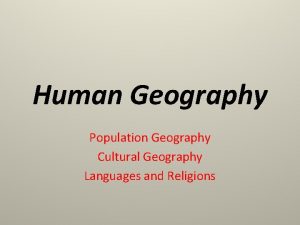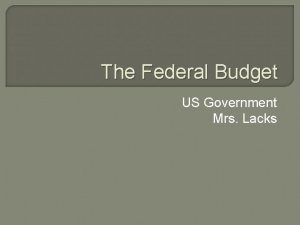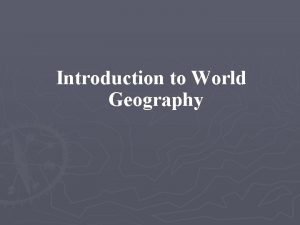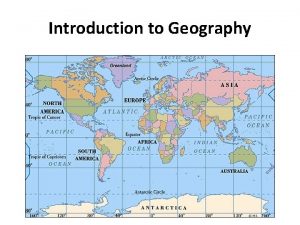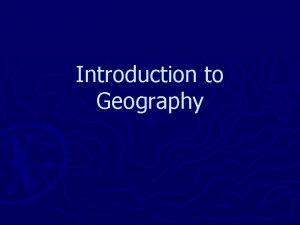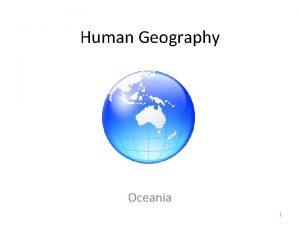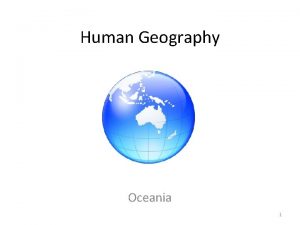Introduction to Human Geography AP Human Geography Lacks






































- Slides: 38

Introduction to Human Geography AP Human Geography Lacks

Questions that Geography Addresses • Where are things located? • Why are they important? • How are places related? • How are places connected? • How are humans affected by their locations?

Physical vs Human • Physical Geography • Human (or Cultural) Geography


5 Themes of Geography • 1. Location • 2. Region • 3. Movement • 4. Human-Environment Interaction • 5. Place

1. LOCATION: Where is it? ABSOLUTE LOCATION (mathematical location)

Latitude & Longitude • Determines absolute location • Latitude: imaginary lines that run east and west and measure north and south • • • Measured from the equator N = north S = south Also called parallels Measured from 0 – 90 degrees

Important Lines of Latitude • Arctic Circle – 66½º north

Important Lines of Latitude • Tropic of Cancer – 23½º north

Important Lines of Latitude • Equator – lies at 0 degrees

Important Lines of Latitude • Tropic of Capricorn – 23½º south Top left: Tropic of Cancer marker in Namibia Bottom left: Tropic of Capricorn marker in Australia

Important Lines of Latitude • Antarctic Circle – 66½º south

Latitude & Longitude • Longitude: imaginary lines that run north south and measure east and west • • • E = east W = west Meet at north and south poles Also called meridians Measured from 0 to 180 degrees (runs through Greenwich, England)

Prime Meridian Right: The Royal Observatory Greenwich, England

International Dateline

Organizing the globe • Hemisphere: half of the globe • Separated by the equator and the prime meridian • What do we live in? hemisphere(s)

Organizing the globe • Continent: large land mass • Ocean: large body of salt water

Organizing the globe • There also bays, seas, gulfs, lakes • What determines name?




LOCATION: Where is it? RELATIVE LOCATION (situation)

2. Regions • Grouping of places that have something in common and can be given a name based on similar features. • Which region of the world do we live in…

Types of Regions • Formal (uniform) regions • Functional (nodal) regions • Perceptual (vernacular/cultural) regions


Other Examples of Regions • Climate zones: Tropical countries, Arctic • Geographic Region: Gulf Coast states; Middle East • Political Regions: countries, states • Economic Regions: OPEC; Sun Belt • Cultural Regions: based on religion, ethnicity, custom i. e. , Latin America, Arab world

3. Movement How and why do people, ideas, products, and events move from one place to another?

Movement • 1) Culture Hearths

Movement • 2) Cultural diffusion • (a) expansion diffusion

Movement • 2) Cultural diffusion (cont…) • b) Relocation diffusion • c) Forces that work against diffusion: • 1) Time distance decay • 2) Cultural barriers

Space–Time Compression Refers to any phenomenon that alters the qualities and relationship between time and space Examples: New technologies (phones, fax) Travel (cars, planes, space shuttles) Economics (need for new markets) Has occurred throughout man’s history, but most theorists specify two time periods as best examples: mid-19 th century to WWI End of the 20 th century

4. Human-Environment Interaction How do people adapt to and/ or change their environment? This includes the impact of physical processes like hurricanes, floods, drought…

Environment • We depend on our environment • We adapt to the environment • We modify the environment

5. PLACE: What is it like? What are the physical and human/cultural characteristics of this place?

Just for fun… • Longest place names

Longest Place Names: rd 3 Place • WALES boasts a village called Llanfair pwllgwyn gyllgo gerychwyrn drobwll llanty silio gogogoch (58 letters)

Longest Place Names: nd 2 Place • NEW ZEALAND has a hill called Taumata whakatangihanga koauau o tamat ea turipukaka pikimaunga horo nuku pokaiwhenua kitana tahu (85 letters) by the Maori. • taumata (brow of a hill), whakatangihanga (music making), koauau (flute), o (of), tamatea (name of a famous chief), turi pukaka (bony knees), piki maunga (climbing a mountain), horo (slip), nuku (move), pokai whenua (widely travelled), ki (to), tana (his), tahu (beloved).

Longest Place Names: st 1 Place • THAILAND: Krung thep maha nakorn boworn ratana kosin mahintar ayudhya amaha dilok pop nopa ratana rajthani burirom udom rajniwes mahasat arn amorn pimarn avatar satit sakattiya visanukam. (163 letters) • Meaning: • krungthep mahanakorn The great city of angels, • amorn rattanakosin mahintara yutthaya mahadilok phop the supreme unconquerable land of the great immortal divinity (Indra), • noparat rajathani burirom the royal capital of nine noble gems, the pleasant city, • udomrajaniwes mahasatharn with plenty of grand royal palaces, • amorn phimarn avatarnsathit and divine paradises for the reincarnated deity (Vishnu), • sakkatattiya visanukam prasit given by Indra and created by the god of crafting (Visnukarma).
 The immortal life of henrietta lacks table of contents
The immortal life of henrietta lacks table of contents Needs analysis necessities lacks wants
Needs analysis necessities lacks wants Howard w jones
Howard w jones Brack plaques radium
Brack plaques radium Members of propaganda movement
Members of propaganda movement The immortal life of henrietta lacks discussion questions
The immortal life of henrietta lacks discussion questions Rhea lacks temerity so she definitely would not
Rhea lacks temerity so she definitely would not Work on the production line is monotonous and lacks
Work on the production line is monotonous and lacks Organism whose cells contain a nucleus
Organism whose cells contain a nucleus Ap human geography political geography frq
Ap human geography political geography frq 5 themes of geography ap human geography
5 themes of geography ap human geography Ap human geography political geography test
Ap human geography political geography test Gni definition ap human geography
Gni definition ap human geography Whats round robin
Whats round robin Ap human geography chapter 11 vocab
Ap human geography chapter 11 vocab Topographic map definition ap human geography
Topographic map definition ap human geography Alpha beta gamma cities ap human geography
Alpha beta gamma cities ap human geography Backwash effect ap human geography definition
Backwash effect ap human geography definition Least cost theory examples
Least cost theory examples Milkshed ap human geography
Milkshed ap human geography Rectangular survey system ap human geography
Rectangular survey system ap human geography Von thunen model ap human geography definition
Von thunen model ap human geography definition Spatial association ap human geography
Spatial association ap human geography Bid rent theory example
Bid rent theory example Second urban revolution ap human geography
Second urban revolution ap human geography Threshold ap human geography
Threshold ap human geography Technopole ap human geography
Technopole ap human geography Modernization model ap human geography
Modernization model ap human geography Multiethnic state definition
Multiethnic state definition The geographic grid
The geographic grid Bidrent theory
Bidrent theory Geri flanary
Geri flanary Cultural ecology ap human geography
Cultural ecology ap human geography Environmental injustice ap human geography
Environmental injustice ap human geography Toponymy definition ap human geography
Toponymy definition ap human geography Threshold human geography
Threshold human geography The geometric arrangement of objects in space
The geometric arrangement of objects in space Carrying capacity ap human geography
Carrying capacity ap human geography Bid rent theory model
Bid rent theory model

